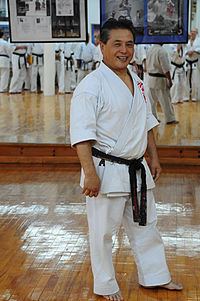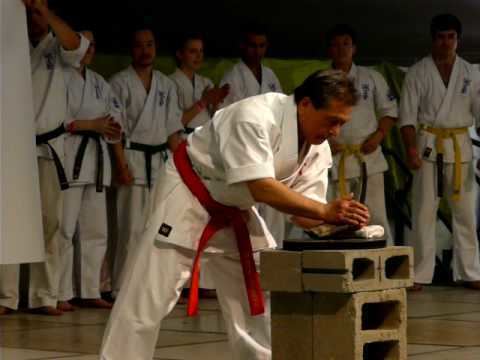Name Tadashi Nakamura | Role Martial artist | |
 | ||
Born February 22, 1942 (age 83) ( 1942-02-22 ) Books Karate Technique & Spirit, Karate: Technique and Spirit | ||
Tadashi Nakamura (中村 忠, Nakamura Tadashi, born February 22, 1942) is the founder and Kaicho (chairman) of World Seidō Karate Organization.
Contents

Early years

Tadashi Nakamura was born on the February 22, 1942 in the town of Maoka on the island of Karafuto. Nakamura trained in various martial arts including Goju-Ryu, Kendo, and Kyokushin. In 1956 he started studying with Mas Oyama (founder of the Kyokushin style of karate) and he had reached the rank of shodan(1st degree black belt) on May 6, 1962.

When he was 19 years old (1961) he made his first tournament appearance , the All-Japan Student Open Karate Championship, where he was placed first. In 1962, he took part in a match against a Muay Thai of the Lumpinee Boxing Stadium. The contest had been to determine which country had the 'best' martial art.

It was around this point in his life that Nakamura started passing his knowledge and experience onto others. Firstly at Camp Zama (a U.S. military base near Tokyo) from 1961 to 1965. He also coached the karate team for the Toho Medical University for three years. He also served as chief instructor at the Kyokushin Karate Honbu in Tokyo while earning his seventh dan.
Kyokushin

On April 5, 1966, the head of Kyokushin Karate, Masutatsu Oyama, selected Nakamura to go to the U.S.A. and spread the spirit of karate. Aged 24 he moved to New York to begin teaching Kyokushin Karate. His first dojo was at the Brooklyn Academy of Music. Over the next ten years he served as the American head of Kyokushin Karate. In 1971 he established the North American Kyokushin Karate headquarters on 14th St in Manhattan. He trained many students: Thomas Wiggins, Claude Battle, Charles Martin, William Best, Michael Reeves and William Oliver and Warren Bailey were some of his students.

As the Kyokushin style became more popular, Nakamura started to feel the quality of the instruction was slipping. He also began questioning the philosophy of his mentor Mas Oyama. In 1976 he respectfully withdrew from Kyokushin Karate, severed links with the Japanese Karate world and established his own style, Seidō juku.
Seido
Seido means 'Sincere Way' and aims to develop students not just physically but also mentally, helping create 'complete' and 'balanced' individuals committed to improving themselves and the communities they live in.
Seido karate's three main principles are Respect, Love and Obedience. Love for one's family and friends. Respect for your fellow karate ka, your seniors, your parents and their knowledge and experience. Obedience (not subservience) to the laws and moral rules of life. Seido is headquartered in New York City, but has many branch dojos around the world. [For worldwide branch locations check: "http://www.seido.com/about/dojo-directory" ]
An important part of the Seido World Seido Karate Organization is the Seido Juku Benefit Foundation which performs many good works for charity, including the annual benefit tournament. Nakamura has received praise and recognition from City, State, National and International leaders for the good works of the benefit foundation.
Books and articles
Nakamura has authored several books and articles on Seido Karate as well as related topics such as meditation, breathing, and teaching. Some of these include;
